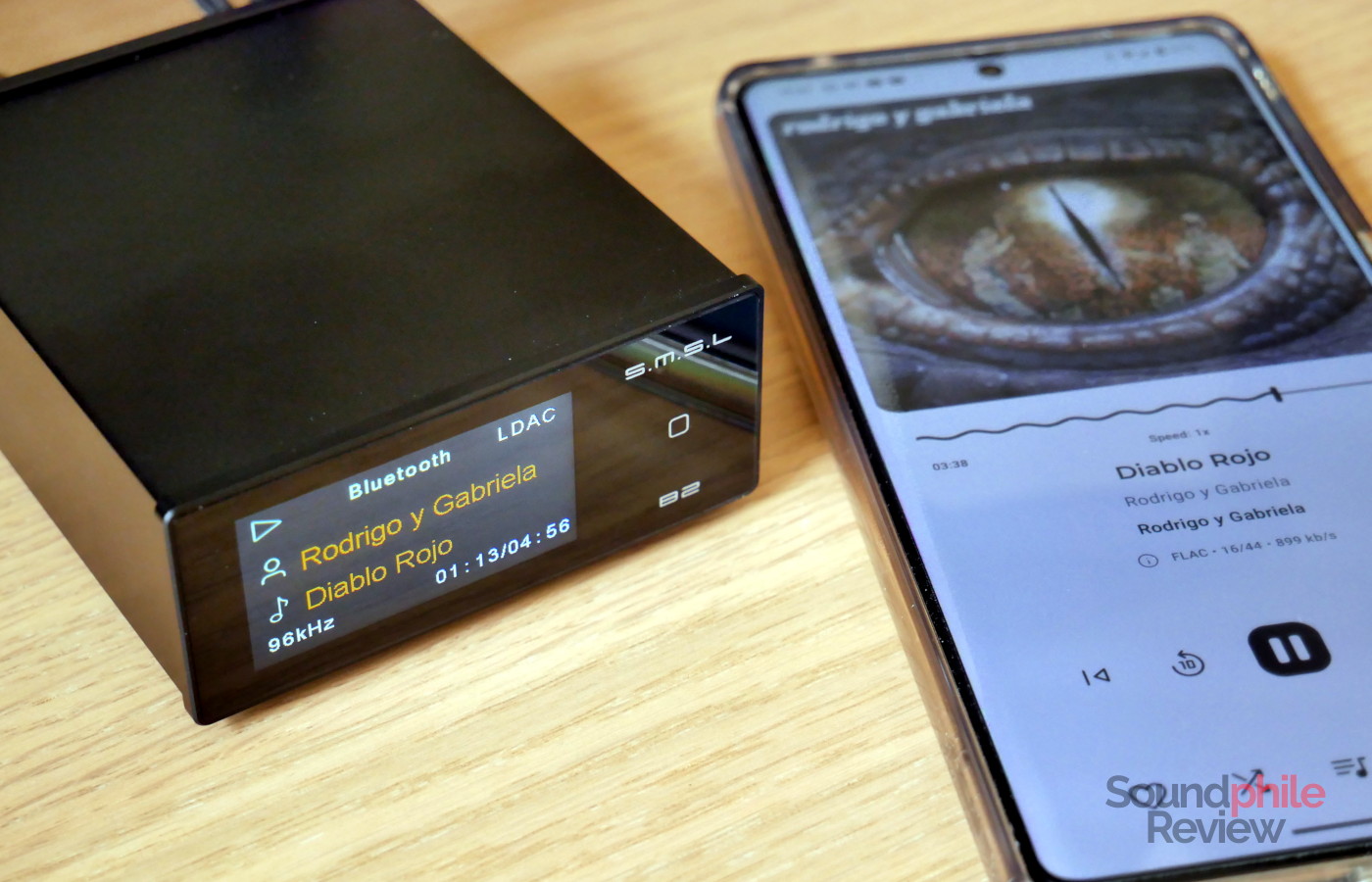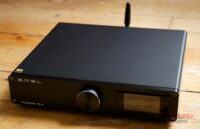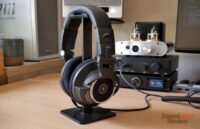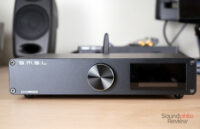I really enjoy the convenience of Bluetooth, especially if I want to share some music with someone else but I don’t want to do so on a phone’s very poor speakers. While I do have Bluetooth on my stereo system in my living room and I (or any guest!) can therefore use it to take advantage of the better quality offered by my speakers, that’s not always the case. As an example, my dad doesn’t have Bluetooth in his system and he added it in a very quirky way, by using a Raspberry Pi – which is not too convenient! The SMSL B2 solves this problem by allowing you to add Bluetooth easily to any setup – and it supports USB-C input, too!
Disclaimer: I received this unit from Aoshida Audio. They sell it for $79.99. Additional information is available on SMSL’s official website.
TL;DR: recap
| Pros |
Cons |
| + Very compact
+ Great build quality + The LCD screen shows track info + Impressive Bluetooth range + Great value |
– None..?
|
Rating: 9/10
Packaging & Accessories
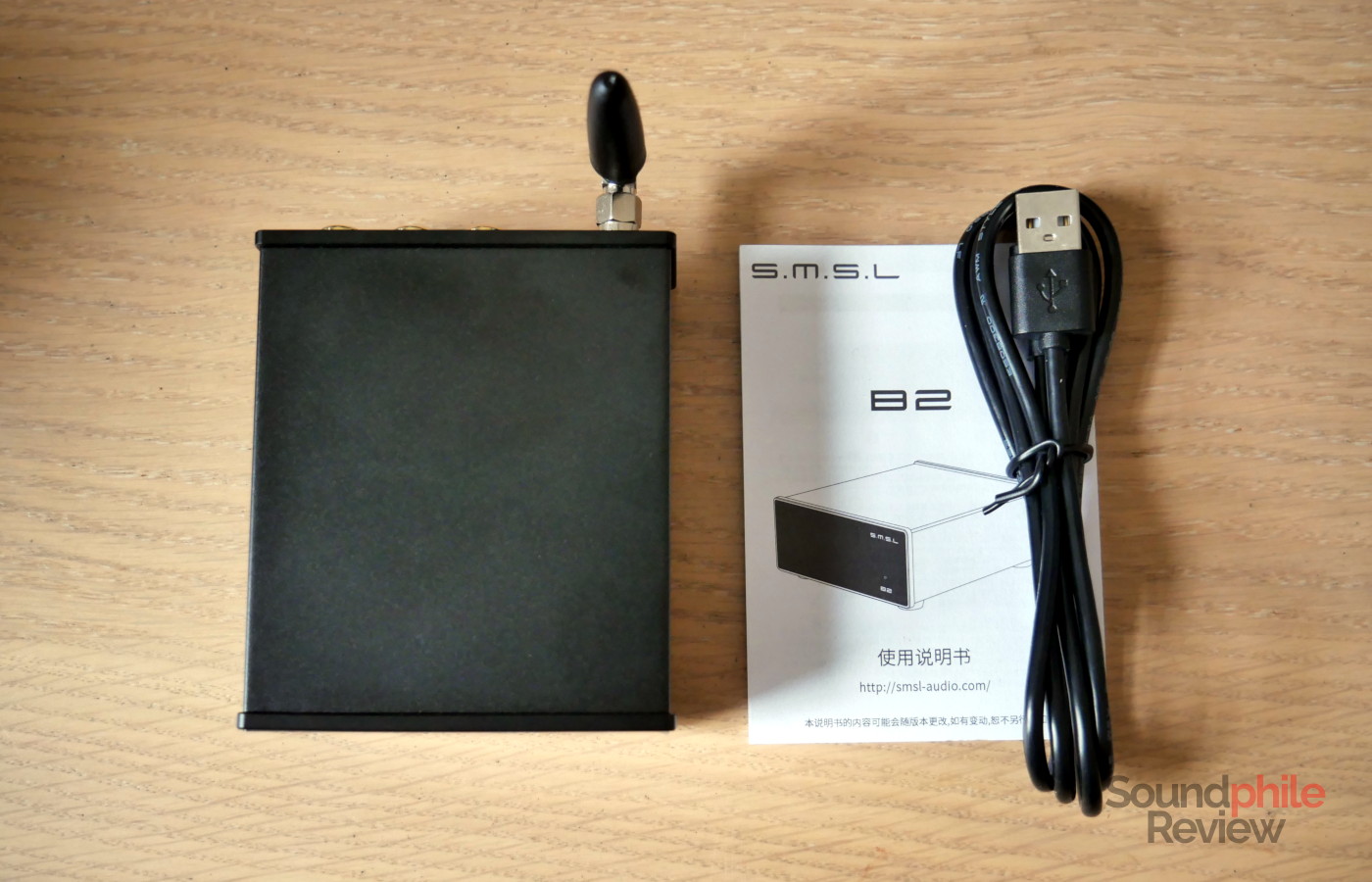
The SMSL B2 only comes with a USB to USB-C cable, the Bluetooth antenna and a small manual – no other accessory is provided. You will therefore need to connect it to either a computer or a USB power supply in order to power it.
Design & Build
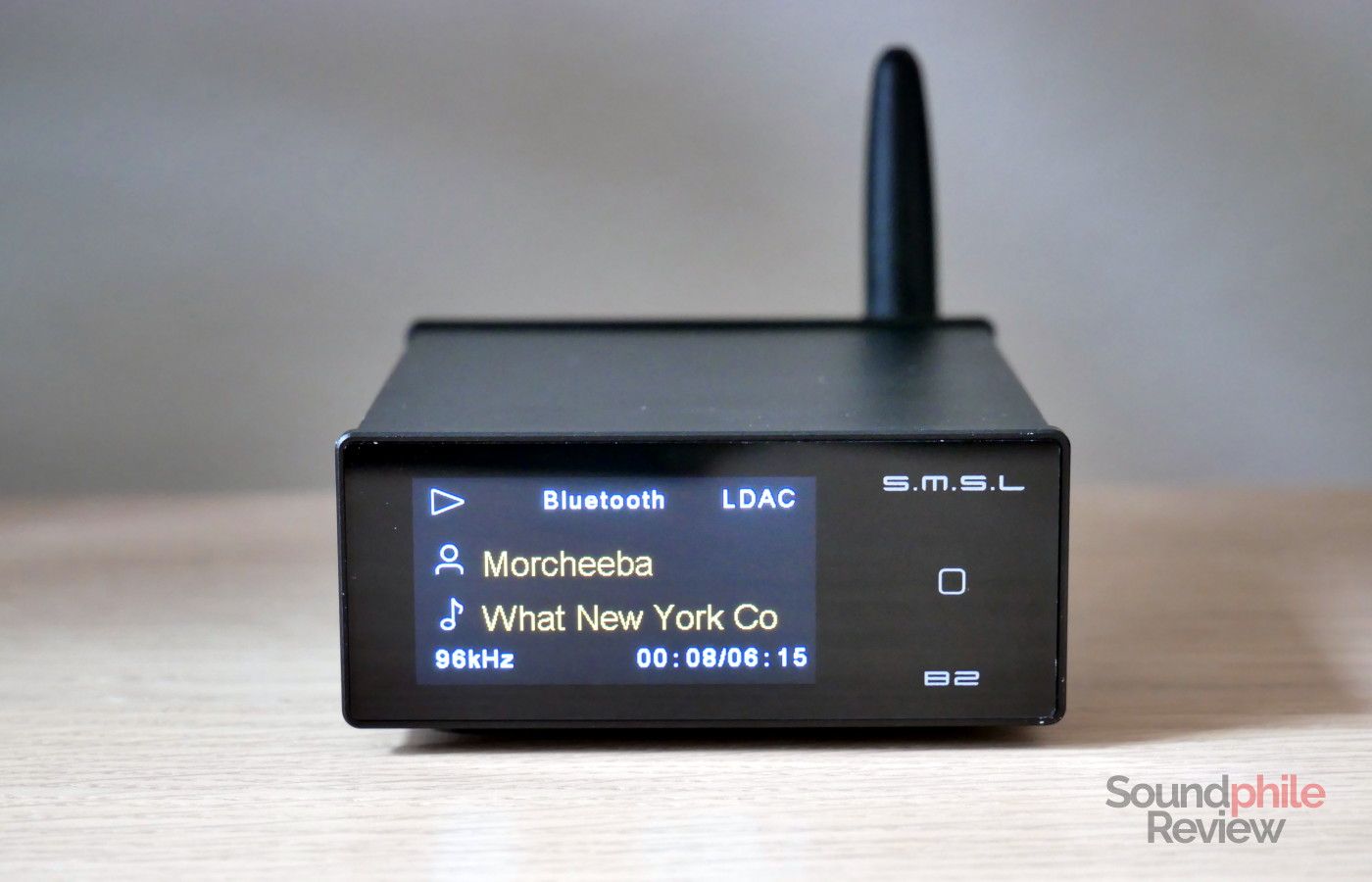
The SMSL B2 is a tiny device, at just 7.7 x 9 x 3.5 cm. It is even smaller than the VE RunAbout 2B Lite, which is one of the smallest devices I’ve seen outside of dongles. Despite this diminutive size, it features the same 1.3″ colour LCD screen that you can find on the rest of SMSL’s range (e.g. on the AO300 or the DO400) which shows various infos (playback status, type of connection, codec, artist, song title, sample rate and progression). Next to it is a capacitive button which you can use to power the device on and off as well as to switch between Bluetooth and USB input. The back hosts the USB input, Bluetooth antenna as well as the optical, coaxial and RCA outputs.
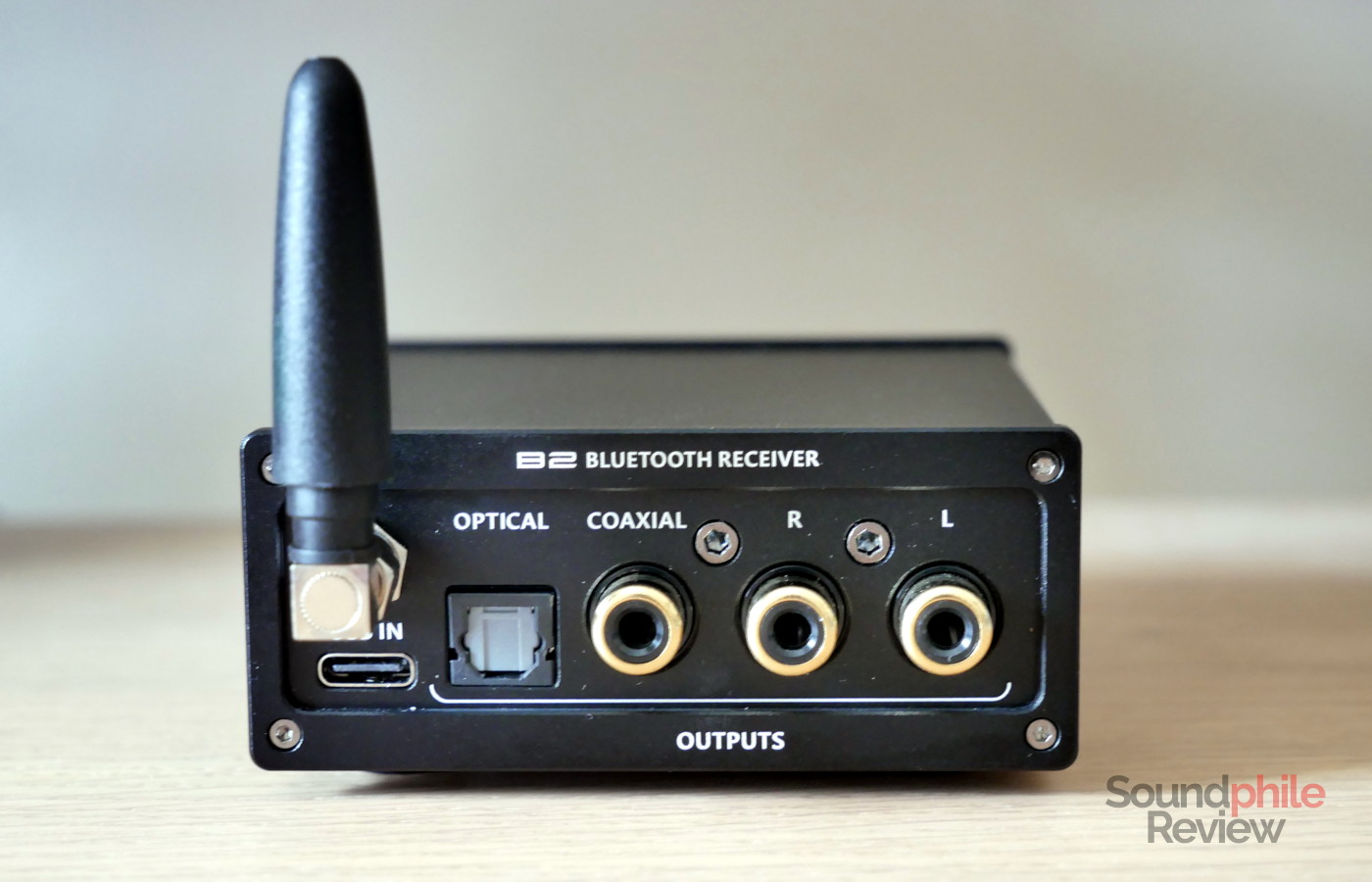
The chassis is made of aluminium, painted black. As usual with SMSL products, it is well manufactured and there is not much to say in terms of build quality – in a good way. It only weighs 90 g, which makes it really lightweight as well – and given you only need a USB cable to power it, it could be a good solution even for unusual environments (for desktop hi-fi equipment at least) like a car or a caravan.
The screen is quite large and very much readable, despite the overall small size of the device; it is also quite bright, so it stays readable even when there is plenty of natural light during the day. Contrary to the higher-end devices, there is no way to set its brightness.
Features & Specs
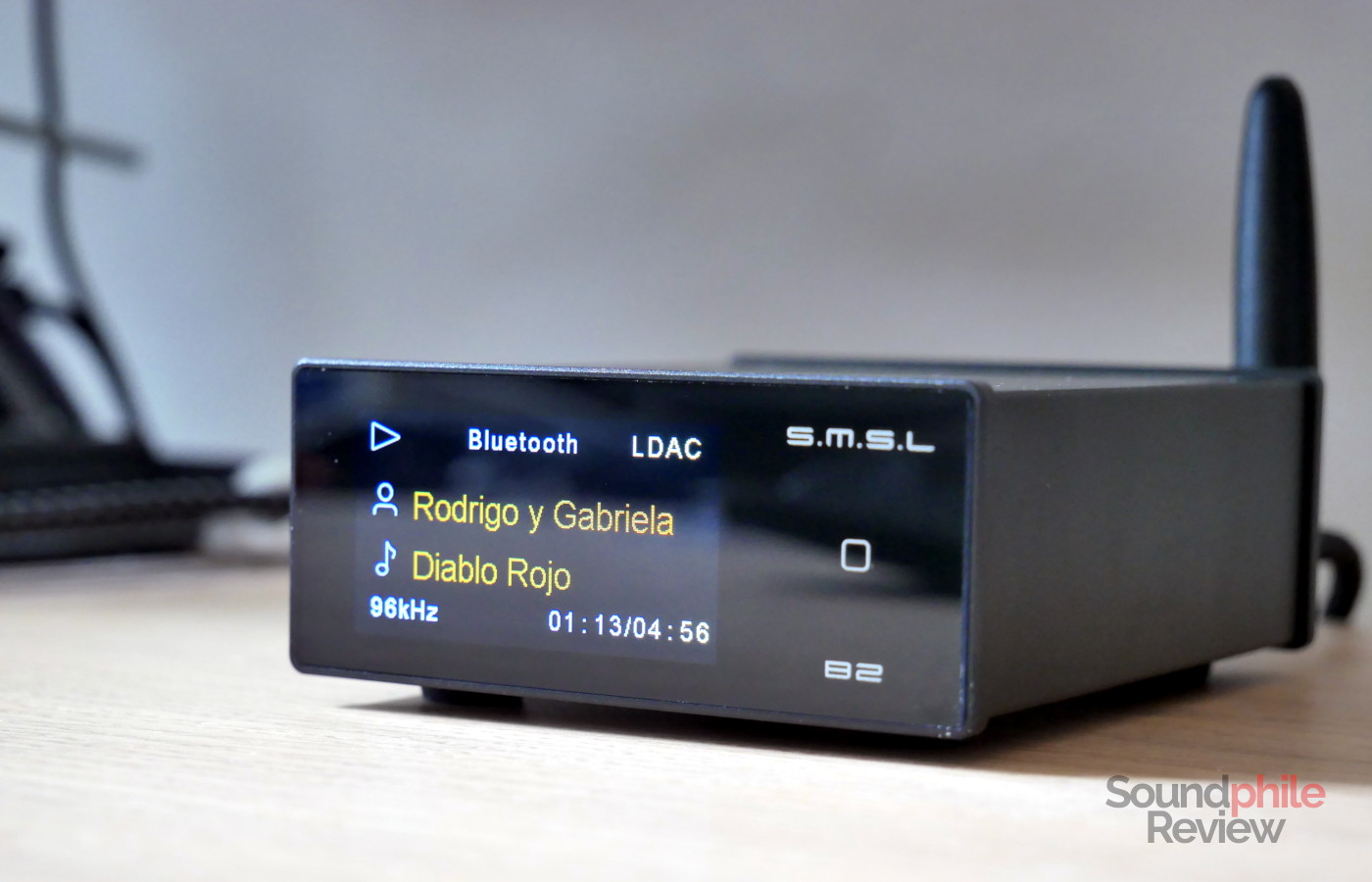
You can use the SMSL B2 as a traditional USB DAC or using Bluetooth. In the latter case, it supports the Bluetooth 5.1 standard and the SBC, AAC, aptX, aptX HD and LDAC codecs. This means you can stream music at (almost) the highest possible quality allowed by the Bluetooth standard. The range is impressive: I can connect the B2 to my Pixel 7 Pro phone and walk around the whole house with no stuttering nor interruptions at all; the music just keeps playing no matter where I am. This is absolutely remarkable!
SMSL mentions compatibility with Windows 7 onwards, which requires a driver, as well as driverless compatibility with macOS and Linux – and I can attest to the latter, with both Bluetooth and USB.
SMSL B2 |
| Input | Bluetooth (up to 24 bit / 96 kHz)
USB (up to 24 bit / 96 kHz) |
| Output | Digital: optical and coaxial (up to 24 bit / 96 kHz)
Analogue: RCA |
| Frequency response | N/A |
| THD+N (@1 kHz) | < 0.0002% |
| SNR | 128 dB |
| Crosstalk | N/A |
| Codecs | SBC, AAC, aptX, aptX HD, LDAC |
The SMSL B2 uses a Cirrus Logic CS43131 DAC chip, which is designed for mobile applications and integrates a headphone amplifier – which is however not used. There is no direct volume management on the device, though you can (obviously, perhaps) adjust the volume on the source. Bluetooth connectivity is provided by a Qualcomm QCC5125 chip.
Sound
I tested the SMSL B2 using both my computer and my Google Pixel 7 Pro.
As far as sound quality is concerned, the B2 produces top-notch sound both in wired and wireless mode. I can’t hear a difference between the USB and Bluetooth inputs, which is expected when using the LDAC codec. There is also no colouration of the sound coming from the device: it is perfectly neutral, which means it won’t interfere with the rest of your system and can therefore integrate seamlessly with any existing setup, leaving any colouration (if any is desired) to the other elements down the chain.
Final Thoughts
The SMSL B2 is priced at $79.99, which sounds very reasonable for what is on offer – and for the incredible convenience it adds to an existing setup that doesn’t have Bluetooth connectivity. My father’s setup is a perfect example, as it is from a time before Bluetooth was a huge thing (or, more correctly, from before it supported high-quality transmission) and the B2 would allow him to add wireless connectivity to it super-quickly – which is very convenient when I just want to let him listen to something without connecting my laptop to his USB DAC. This personal example is just a trivial one that exemplifies the kind of situation where the B2’s high-quality Bluetooth connectivity would come in handy, but of course there are countless other examples that could be made.
The B2 also works perfectly well as a small desktop DAC you can feed through USB, and in fact it is an alternative to more expensive and larger options if you only need RCA output (e.g. to feed active speakers or a headphone amplifier). This makes it quite a versatile device which can work in a lot of different cases. And that’s the reason why I highly recommend it!

